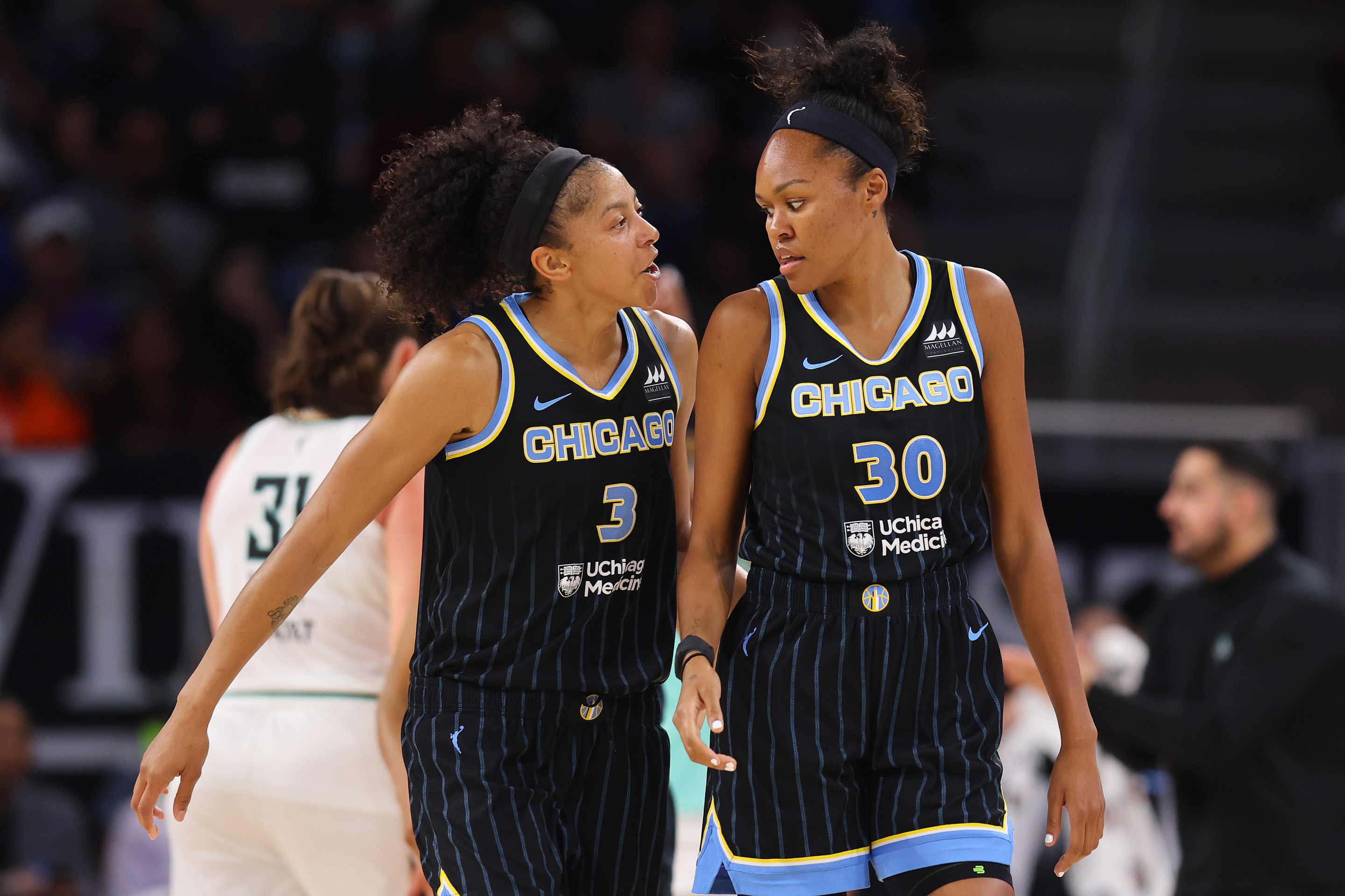After being upset at home to begin their first-round playoff series, the No. 2 Chicago Sky made it up to the home crowd with a wire-to-wire win over the No. 7 Liberty on Saturday. The Sky set the WNBA record for margin of victory in a playoff game (final score: 100-62!) and crushed a Liberty team that turned the ball over often and couldn't even do much with the ball when they had it. The next day, the six-seed Dallas Wings evened up their own first-round series against the three-seed Connecticut Sun with a win in Connecticut. So the weekend results mean two deciding Games 3 ... in New York and Dallas.
Last November, when the WNBA announced it was doing away with the single-elimination early rounds and instead making the first round a best-of-three series, one provision of the new rules intrigued me: "The planned change for the first-round series games will include a 2-1 format in which the higher seed will host Games 1 and 2 and the lower seed will host Game 3 if necessary."
This is pretty funny. Funny because I always believed home-court advantage to matter most in the decisive game. Your season might be on the line, but at least you played well enough in the regular season to make an inherently uncomfortable situation slightly more comfortable. I wasn't alone in this belief. Sky head coach James Wade didn't yet know his team would be playing a decisive road game when he told reporters a week ago that he didn't like the way the first round had been structured. "You always want the deciding game, if there's a Game 3, to be at the higher seed's home," Wade said then. He waved the issue away after the win Saturday, insisting his team could win "on the moon" so long as they continued to play well, but the interesting puzzle remains. Should a best-of-three series go (1) higher-lower-higher; 2) higher-higher-lower; or 3) lower-higher-higher? It probably depends on what you understand "home-court advantage" to mean. The second, current arrangement sees it a greater guaranteed number of home games, but it also takes for granted that the third game is no more important than the first two. The WNBA's own definition has evolved. Back when the WNBA Finals were best-of-three, before moving to best-of-five in 2008, the league used the third arrangement, letting the lower seed host the first game so that the higher seed could always win it all at home.
The first arrangement makes for more commercial air travel, which WNBA players tend to dislike. The second arrangement fails to account for the stakes of each game. The third might warp the momentum. My proposal: Let the higher seed CHOOSE which format they want. This would force coaches to do game theory, to reveal their values, to contend with the drawbacks of each format, and to potentially get owned if their choice somehow backfires! The games in New York and Dallas this week might raise some questions of fairness, depending on how they go, but the answer is probably as simple as this: If you really are the better team, you should just win your home games.






